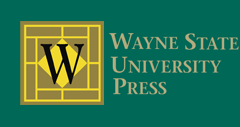Document Type
Open Access Article
Abstract
This article theorizes methodological transparency in intersections of book history and pedagogy. To illuminate the intersections of accessible pedagogy and liberation bibliography, I describe the process of planning and conducting an archive-based workshop submitted to the Bibliographical Society of America. The workshop focuses on one book object: an 1836 New Testament embossed in raised roman letters meant to be read by the fingers of low-vision and blind students. The workshop especially seeks to reach community and traditionally nonacademic spaces, both virtual and on-site. Workshop participants discuss and reflect on the relationships among education access, disability history, and the book as a material object. We emphasize the merging of method with material: in the same way that the embossed book attempted to make literacy accessible to blind and low-vision readers, this workshop must be accessible to a range of participants and tailored to the individual needs and preferences of those registered. Reflecting on the planning, conducting, and aftermath of this workshop, I suggest that the workshop potentially merges disability pedagogy and liberation bibliography: interdependence is not only acknowledged but also privileged; hierarchies are not only identified but also unpacked; and knowledge is made rather than received. I build this theorization from participant’s contributions, feedback, and meta-reflections that assess the workshop on multiple levels, from access to content.
(In the issue section "Uncovering Labor")
Recommended Citation
Stuckey, Amanda
(2022)
"Access in Book History Methodology and Pedagogy: Report from the “Touch to See” Workshop,"
Criticism: Vol. 64:
Iss.
3, Article 11.
Available at:
https://digitalcommons.wayne.edu/criticism/vol64/iss3/11
